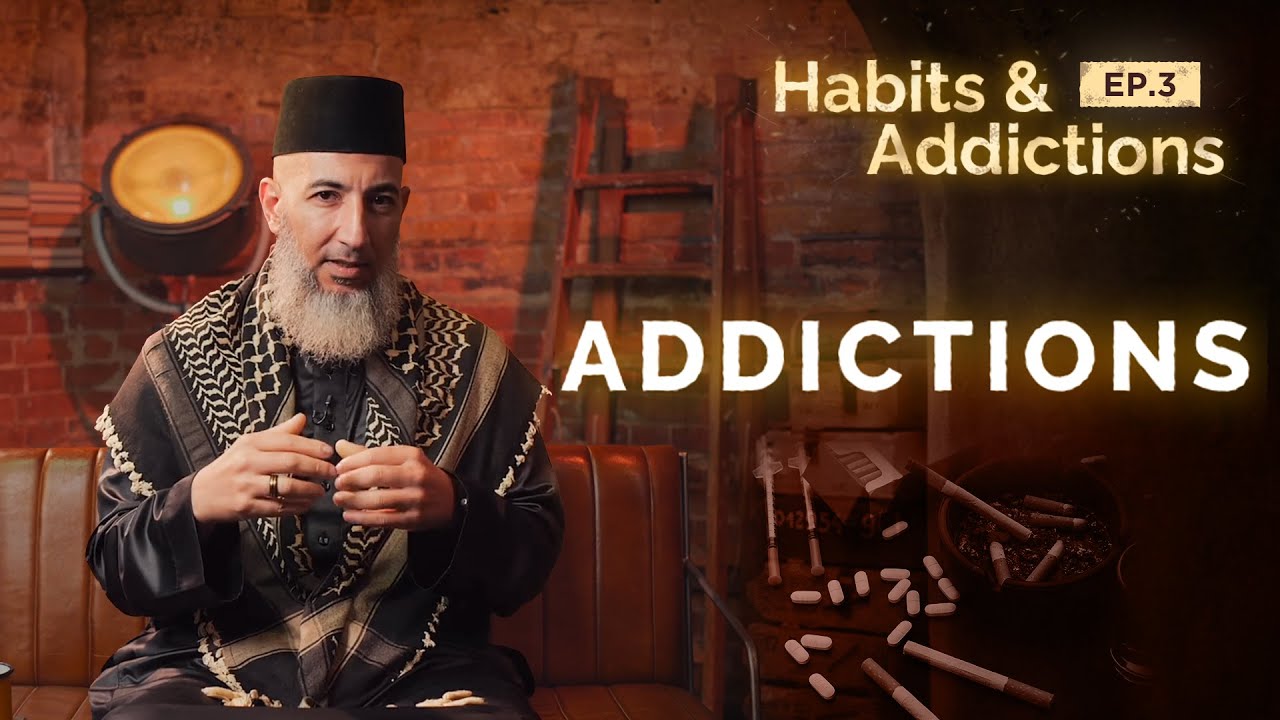Behavioural Addictions for Beginners
Summary
TLDRThe video script discusses behavioral addictions, which often occur in clusters influenced by genes and can lead to relapse in primary substance addictions. It outlines three clusters: hedonistic (alcohol, nicotine, drugs, gambling), nurturant (overeating, shopping, workaholism), and relational (relationship addiction, compulsive helping). The script stresses the importance of abstinence from all addictive outlets within a cluster and the use of 12-step programs adapted for each addiction. It also highlights the grief reaction upon giving up addictions, which can take up to two years to process fully.
Takeaways
- 🧩 Addictive outlets often come in clusters, influenced by genetics.
- 🚬 Smokers face double the risk of relapsing into alcohol or drug use compared to non-smokers.
- 🎲 The hedonistic cluster includes addictions to alcohol, nicotine, recreational drugs, and gambling.
- 🍔 The nurturant cluster encompasses food addiction, shopping, and compulsive behaviors like excessive exercise.
- 🤝 The relationship cluster involves using others as a source of addiction, leading to unhealthy dynamics.
- 🔄 Abstinence from all addictive outlets within a cluster is essential to prevent relapse.
- 📉 Behavioral addictions can be as damaging as substance addictions, affecting families and businesses.
- 📋 Each behavioral addiction requires differentiation from normal behaviors through specific questionnaires.
- 👥 Anonymous fellowships exist for various addictions, following a 12-step program similar to Alcoholics Anonymous.
- 🌱 Recovery involves grief reactions that can take up to two years, but achieving acceptance leads to a fulfilling life.
Q & A
What are behavioral addictions?
-Behavioral addictions are compulsive behaviors that can have a negative impact on an individual's life, similar to substance addictions, but they involve activities rather than substances.
How do addictive outlets typically cluster?
-Addictive outlets often come in clusters, influenced by a single gene, and having one addictive behavior in a cluster puts an individual at risk for relapse with other behaviors in the same cluster.
What is the hedonistic cluster in the context of behavioral addictions?
-The hedonistic cluster includes addictions such as alcohol, nicotine, recreational drugs, mood-altering prescription drugs, caffeine, gambling, risk-taking, and sex and love.
What behaviors are included in the nurturant cluster of addictions?
-The nurturant cluster includes food addiction, particularly to sugar and white flour, leading to behaviors like binging, starving, vomiting, or purging, as well as shopping, spending, work, hobbies, interests, sex, computer use, and exercise.
What does the relationship cluster involve in terms of behavioral addictions?
-The relationship cluster involves using other people as if they were drugs, compulsive helping, and relationship addiction, where individuals may act in a dominant or submissive manner to control or manipulate others.
Why is abstinence from all addictive outlets within a cluster necessary to prevent relapse?
-Abstinence from all addictive outlets within a cluster is necessary to prevent relapse because using any one of them can trigger a relapse to other addictive behaviors within the same cluster.
How do behavioral addictions differ from substance addictions in terms of damage they can cause?
-Behavioral addictions can cause major damage and are not less severe than substance addictions. They can destroy families or enterprises just as much as alcoholism or drug addiction.
What is the role of specific questionnaires in addressing behavioral addictions?
-Specific questionnaires help differentiate behavioral addictions from equivalent normal behaviors, allowing individuals to identify if their behaviors have crossed into addictive territory.
What are Anonymous fellowships and how do they support individuals with behavioral addictions?
-Anonymous fellowships are support groups that work on a 12-step program adapted from Alcoholics Anonymous, providing a community for individuals to address their specific behavioral addictions.
How should an individual with a behavioral addiction approach their recovery?
-An individual should abstain from using the behavior addictively, learning to engage in it for its primary purpose rather than to fill an emotional void, and seek guidance from those who have successfully completed the 12-step program.
What is the significance of the grief reaction in the process of giving up an addiction?
-The grief reaction is a natural process that individuals go through when giving up an addiction, involving stages of denial, anger, sadness, and negotiation, leading to acceptance, and typically takes about 2 years to work through.
Outlines

このセクションは有料ユーザー限定です。 アクセスするには、アップグレードをお願いします。
今すぐアップグレードMindmap

このセクションは有料ユーザー限定です。 アクセスするには、アップグレードをお願いします。
今すぐアップグレードKeywords

このセクションは有料ユーザー限定です。 アクセスするには、アップグレードをお願いします。
今すぐアップグレードHighlights

このセクションは有料ユーザー限定です。 アクセスするには、アップグレードをお願いします。
今すぐアップグレードTranscripts

このセクションは有料ユーザー限定です。 アクセスするには、アップグレードをお願いします。
今すぐアップグレード関連動画をさらに表示

Priest Ranks Worst Addictions

The Need for a Competing Interest | Episode 008 Video Game Addiction

Neuroscientist's Guide to 30 Days Nofap — Dr. Anna Lembke

Habits & Addictions | Episode 03 | Addictions ⚠️ | Sheikh Wael Ibrahim

The Effects of Pornography on Your Brain

How To Quit ANY ADDICTION (The Strategy)
5.0 / 5 (0 votes)
